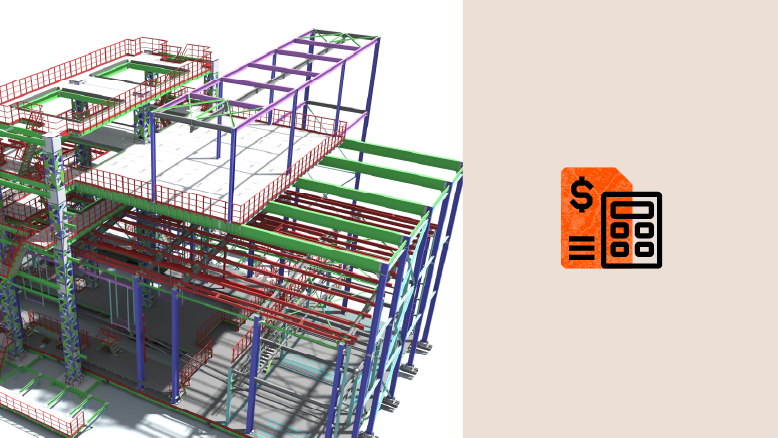— 8 min read
Managing Direct Costs in Construction — and Their Impact on the Budget


Last Updated Jun 26, 2025

Margaret Roberts
Margaret Roberts is a Senior Strategic Product Consultant at Procore Technologies. After a career as a commercial real estate agent at The Diamond Group and KW Commercial, Margaret was a project manager for commercial properties including multiple hotel and resorts. Margaret was also previously the Director of Business Development for Suffolk Construction. Margaret is an alumnus of the University of Virginia and Harvard University and currently lives in New York City.

Taylor Riso
Contributing Writer
91 articles
Taylor Riso is a marketing professional with more than 10 years of experience in the construction industry. Skilled in content development and marketing strategies, she leverages her diverse experience to help professionals in the built environment. She currently resides in Portland, Oregon.

Kelsie Keleher
Senior Strategic Product Consultant, General Contractors
13 articles
Kelsie is a Senior Strategic Product Consultant for general contractors at Procore; working closely with civil and infrastructure clients. Kelsie holds a Masters of Business Administration (MBA) and has close to a decade of experience in construction accounting and finance.
Last Updated Jun 26, 2025

Direct costs in construction are expenses directly linked to the construction of a specific project, such as materials, labor and equipment. These costs are key components in project planning and execution, forming the backbone of budgeting and financial management in the construction process. Understanding how to manage direct costs is crucial for ensuring that project estimates are accurate, bidding is competitive and profitability is maintained.
In this article, we examine direct costs in the construction industry, how they differ from indirect costs and effective strategies for estimating and managing them.
Table of contents
Understanding Direct Costs
Direct costs in construction are related to the physical building process of a project. These costs include all expenses that are directly attributable to the construction phase, including labor wages, materials, equipment usage and subcontractor fees. Unlike indirect costs, which are more generalized and not linked to any specific task, direct costs can be directly associated with particular activities or project segments, making them critical for detailed cost tracking and management.
Direct costs play a pivotal role in forming the basis of the project budget, enabling contractors to accurately forecast the financial resources needed to deliver the work. When bidding on projects, understanding direct costs helps contractors develop competitive and realistic proposals, ensuring that quotes are reflective of the actual costs, which is vital for securing projects and generating a profit.
Direct Costs vs. Indirect Costs
To grasp the concept of direct costs, it's beneficial to differentiate them from indirect costs. Direct costs in construction are expenses that are directly attributable to the physical construction of a project while indirect costs are expenses that support the overall project but are not directly tied to the specific construction activities.
Understanding the various types of direct costs is key to accurate budgeting and financial management of construction projects, as these expenses significantly impact the total budget and profitability. Let’s examine the main types of direct costs encountered in construction.
Learn more about indirect costs — and the differences between direct and indirect costs.
Key Types of Direct Costs in Construction
Materials
Materials costs encompass all the physical inputs required to complete a project—from steel and lumber to concrete and electrical components. These costs can vary widely, influenced by the project's size and material quality and quantity requirements.
Labor
Labor costs constitute a significant portion of direct costs and include wages and salaries for both skilled and unskilled workers involved in the project. This also includes overtime pay, benefits and any required adherence to labor laws, all of which have an impact on the overall cost of construction.
Equipment
Construction projects often require a range of machinery and tools to execute the work, and the cost of purchasing or renting these can be quite hefty. Beyond the initial acquisition or rental costs, other aspects like depreciation, repairs and fuel also contribute to the total cost of equipment, all of which are crucial to account for in project budgeting.
Subcontracts
Construction projects often require the expertise of subcontractors for specialized tasks. The payments made to these subcontractors are direct costs and need to be integrated into the overall project budget. Managing these costs effectively is vital to ensure that the overall project remains within financial projections.
The Impact of Direct Costs on Profitability
When direct costs are meticulously managed, they set the foundation for realizing the targeted profitability on a project. Lower direct costs — achieved through efficient procurement, cost-effective labor management, and strategic resource utilization — can significantly reduce the total project cost and widen profit margins. On the other hand, any underestimation or mismanagement of direct costs can lead to cost overruns, squeezing the profit margins and potentially resulting in financial losses.
Underestimating or mishandling these costs can result in the opposite effect: unexpected expenses that narrow profit margins or, in extreme cases, lead to financial loss. Recognizing how direct costs influence profitability is key to strategic decision-making in project management.
A prevalent issue arises when project bidding and actual procurement do not align. For example, if a project's budget is based on a specific cost for materials — say, stone priced at $30 per ton — and this detail isn't communicated properly during ordering, costs can rise unexpectedly. If the quarry isn't informed that the rock is being ordered based on a previously agreed price under a purchase order, they may charge a standard rate, which could be higher, such as $35 per ton. This discrepancy might be overlooked by accounts payable if purchase orders aren't used or referenced, leading to increased project costs.
Understanding the connection between direct costs and profitability allows for better decision-making at the project management level.
Stay updated on what’s happening in construction.
Subscribe to Blueprint, Procore’s free construction newsletter, to get content from industry experts delivered straight to your inbox.

Calculating Direct Costs
Estimating direct costs begins with a thorough understanding of the project's scope and the resources required. This is facilitated by developing a Work Breakdown Structure (WBS), which involves breaking down the project into smaller, quantifiable units. After establishing the WBS, assigning costs to each of these units is efficiently managed through a Cost Breakdown Structure (CBS), which categorizes the costs, aligning them with current market rates, historical data and future market predictions.
Utilizing software tools can further enhance accuracy, allowing for the analysis of data from similar past projects. Furthermore, monitoring market trends and supplier prices to update cost databases ensures that estimates reflect the current financial landscape.
A detailed quantity takeoff is also an important part of refining cost estimates. By meticulously cataloging all materials and equipment needed to execute the project, quantity takeoffs not only inform the budgeting process but also aid in identifying bulk purchase opportunities, which can drive cost savings. By taking the time and effort to develop precise quantity takeoffs, construction professionals can avoid overestimation, which ties up capital unnecessarily, or underestimation, which can lead to project delays and budget overruns.
Managing and Controlling Direct Costs
After estimating direct costs, the focus shifts to ongoing management and control, ensuring that initial estimates align with actual expenditures and project objectives. Let’s explore best practices that construction professionals can use to maintain a tight rein on direct costs, optimize resource allocation, and safeguard project profitability.
Rely on a foundation of solid project management.
Project managers play a crucial role in overseeing direct costs, ensuring that every dollar spent contributes to the project's value. They are responsible for integrating cost control into the overall project management plan, coordinating with various stakeholders and maintaining a clear line of communication regarding the project's financial status. Effective project management involves continuously comparing projected costs with actual expenditures, identifying variances, and determining their causes. By understanding the financial implications of project decisions, managers can guide their teams to operate within the established budget and minimize financial risks.
Implement cost-tracking systems.
To effectively manage and control direct costs, establishing robust job costing and cost coding allows for the categorization of every expense, enabling precise tracking of financial resources across different project components and phases.
Coupling this financial framework with sophisticated software and data analytics not only automates and streamlines the cost-tracking process but also integrates data analytics to understand spending patterns, highlighting areas for potential savings and efficiency gains. By merging a well-structured cost coding system with the advanced capabilities of modern software, construction companies can unlock deeper insights into cost management, enhancing the project’s financial performance and contributing to the firm’s overall fiscal well-being.
Add in contingency as part of the project budget.
Incorporating contingency into the project budget acknowledges that there are inherent uncertainties in construction. The contingency acts as a financial buffer to address unforeseen expenses or conditions that arise without compromising the project's overall financial stability.
By proactively including a contingency fund, firms can ensure they have the flexibility to respond to unexpected direct costs, such as sudden price increases in materials or immediate labor needs, without derailing the entire project budget. This foresight not only safeguards against potential financial overruns but also contributes to a more resilient and adaptable financial planning process, enhancing the project's ability to achieve its financial objectives and maintain profitability.
Lean on relationships with suppliers and subcontractors.
Effective control and management of direct costs in construction not only rely on internal practices but also significantly depend on external factors, particularly suppliers and subcontractors. Building and maintaining strong relationships with these partners can lead to more favorable pricing, improved terms and higher quality service, all of which contribute to cost efficiency.
By leveraging these relationships, firms can negotiate better deals, secure bulk purchase discounts or gain access to cost-saving opportunities. Additionally, trusted suppliers and subcontractors are more likely to work collaboratively to find cost-effective or value engineering solutions that can save money without compromising quality.
Courses about construction.
For construction.
Unlock your career potential with our free educational courses on Health & Safety, Data in Construction, and more.
Modern Influence and the Future of Direct Costs
Over the past few decades, the construction industry has witnessed a significant shift in how direct costs are incurred and managed, largely driven by advancements in technology and changing procurement behaviors.
Online ordering has transformed the impact of direct costs, offering the ability to almost immediately acquire materials and services and sidestepping the slower, more deliberate steps of traditional procurement, like approval hierarchies and manual processing. This shift can boost efficiency and accelerate project progress but may also drive up direct costs. The speed and convenience encourage quick decisions, sometimes leading to hasty or misaligned purchases that can strain the project's budget, highlighting the need for vigilant cost tracking.
In the past, the procurement process was embedded with various layers of checks and balances, such as budget evaluations and necessary approvals, which naturally moderated expenditure and helped with cost management. Now, without these traditional processes in place, it's crucial for construction firms to develop new strategies for maintaining budgetary discipline and ensuring that the fast pace of digital procurement doesn't compromise the financial health of the project. This calls for a balanced approach, leveraging the benefits of digital procurement while instituting new safeguards to maintain control over project finances.
Was this article helpful?
Thank you for your submission.
100%
0%
You voted that this article was . Was this a mistake? If so, change your vote
Scroll less, learn more about construction.
Subscribe to The Blueprint, Procore’s construction newsletter, to get content from industry experts delivered straight to your inbox.
By clicking this button, you agree to our Privacy Notice and Terms of Service.
Thank you!
You’re signed up to receive The Blueprint newsletter from Procore. You can unsubscribe at any time.
Categories:
Written by

Margaret Roberts
Margaret Roberts is a Senior Strategic Product Consultant at Procore Technologies. After a career as a commercial real estate agent at The Diamond Group and KW Commercial, Margaret was a project manager for commercial properties including multiple hotel and resorts. Margaret was also previously the Director of Business Development for Suffolk Construction. Margaret is an alumnus of the University of Virginia and Harvard University and currently lives in New York City.
View profile
Taylor Riso
Contributing Writer
91 articles
Taylor Riso is a marketing professional with more than 10 years of experience in the construction industry. Skilled in content development and marketing strategies, she leverages her diverse experience to help professionals in the built environment. She currently resides in Portland, Oregon.
View profileReviewed by

Kelsie Keleher
Senior Strategic Product Consultant, General Contractors | Procore
13 articles
Kelsie is a Senior Strategic Product Consultant for general contractors at Procore; working closely with civil and infrastructure clients. Kelsie holds a Masters of Business Administration (MBA) and has close to a decade of experience in construction accounting and finance.
View profileExplore more helpful resources

BIM for Construction Cost Control & Budget Management
As the construction industry advances in its digital transformation journey, building information modeling (BIM) is becoming increasingly common. Teams and individuals who push back against using the 3D model and...

How Project Phasing Keeps Construction Projects on Time and on Budget
Managing a construction project involves balancing countless tasks, coordinating multiple trades and meeting strict deadlines. Without a structured approach, it’s easy for projects to fall behind schedule or exceed budget....

Estimate vs. Budget: Tools to Guide Construction Financial Planning
Whether building a residential home, a commercial complex or a large-scale infrastructure development, understanding and managing costs is key to completing a project on time and within financial limits. Effective...

Construction Project Over Budget? Common Causes & Solutions
On construction projects, going over budget is an all-too-common scenario. This situation is more than a mere miscalculation: It can fundamentally alter the trajectory and outcome of a construction project...
Free Tools
Calculators
Use our calculators to estimate the cost of construction materials for your next project.
Templates
Find a template to help you with your construction project tasks.
Material Price Tracker
Get the latest U.S. retail prices and view historical trends for common building materials.
Glossary
Explore key terms and phrases used in the industry.
